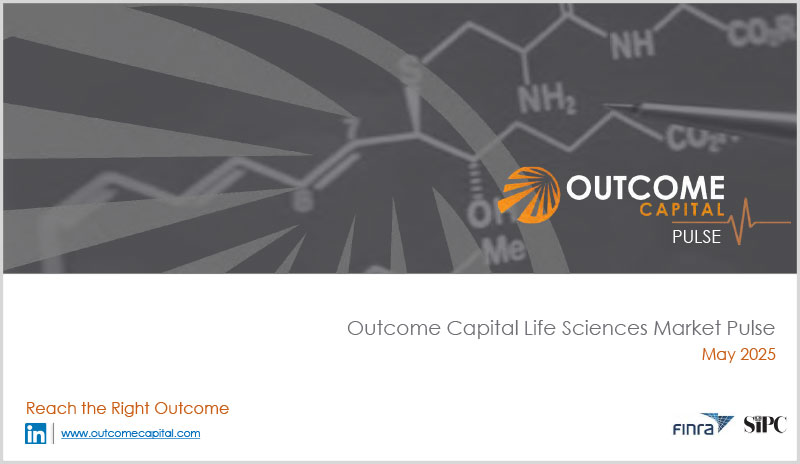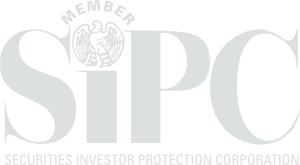Navigating the Post-COVID Hangover for Life Sciences Markets

Navigating the Post-COVID Hangover for Life Sciences Markets
By: Paul Mieyal, PhD, CFA
Over the past several years, we saw the reemergence of the TINA phenomenon – i.e., “there is no alternative” [to equities]. With treasury bonds paying little interest, and zero interest on cash savings, investors gravitated to the equity markets in search of returns. As markets continued to rise during the pandemic and enticed new participants, the lockdown enabled a generation of stay-at-home day traders which was further fueled by platforms such as Robinhood. As during the tech bubble of the late 90’s and early 2000, a steadily rising market attracted generalist investors into higher risk sectors. For biotechnology, in particular, the high profile COVID-driven windfalls for companies such as Moderna attracted fast money and created a positive halo effect for fundraising in the sector.
The relatively short-lived boon for funding of COVID-related vaccine and diagnostic companies is now generally over. While some level of COVID-related products is here to stay, most companies are seeing such revenues recede as rapidly as they emerged, and others missed the window of opportunity altogether. A clear sign of the passing is that many COVID home tests are now being given away for free. Companies which were heavily focused on COVID-based revenues are finding that they cannot raise additional capital, are experiencing substantial downward revaluation, or winding down operations altogether.
In parallel, interest rates have recently been increased rapidly to a level which renders bonds and cash savings relevant again. This has the dual effect of disincentivizing equity investments in higher risk sectors such as tech and biotech while simultaneously making bonds and cash savings more attractive by virtue of their relative safety and (now) tangible return rate. As a stand-alone phenomenon, increased interest rates would cause some portfolio rotation out of equities. With increased market volatility heading into Q4 of 2022, there was a rapid evaporation of interest in private biotech investments by generalist funds, high net worth individuals and family offices who retreated back to the traditional comfort zones of real estate and bonds.
From Outcome’s interactions, many healthcare-focused VCs have indicated that, for the near term, they are looking for later stage assets for new investments as they need to support existing portfolio companies that are anticipated to have challenges in raising outside capital or going public via an IPO. Largely driven by the global lockdown, the brief surge in SPACs has also subsided as traditional IPOs are re-emerging as the preferred path to going public.
Many private companies are seeking partnership opportunities, and we have been hearing a consistent message that there is a large backlog of opportunities being evaluated by large pharma and medtech, such that business development groups are scheduling meetings out 4 weeks or more for an introductory meeting.
From the acquirer’s perspective, the public valuations of many potential target companies are down relative to the past 2 years, and this can make M&A more attractive. However, this is a siren song of an M&A boom which rarely plays out as hypothesized. Individual divisions in large pharma also feel the budget crunch and need to be conscious of their own P/L. In practice during a market downturn, potential acquirers more often deploy cash toward stock repurchases than opportunistic M&A transactions that they wouldn’t otherwise pursue strategically in a normal market. The recently enacted Inflation Reduction Act of 2022 includes a new, non-deductible, 1% excise tax on “repurchases” of the stock of “covered corporations” which occur after December 31, 2022. There is rhetoric about increasing the percentage rate of this excise tax. Over time, this might lead to a slightly preferential use of corporate cash for M&A vs. stock repurchases.
Looking forward, there are early signs that with the closing of 2022 and some relative settling of the interest rate environment, things are cautiously beginning to open back up. Following the annual kick-off at the January JP Morgan Healthcare conference, it appears that VCs and corporates are getting through the backlog of opportunities and beginning to narrow down potential transactions that they view as actionable. The bar for IPOs remains high, but recent successes such as Mineralys and Structure Therapeutics indicate that the market is not completely closed.
Interwoven within all of the current market action is the inflation debate, but that is a separate discussion in and of itself…
News
Outcome Capital Launches the First Dedicated Ophthalmology Practice to Address the World’s Leading Cause of Disability
Appoints Paul Ryb Managing Director to Lead Firm’s Expansion BOSTON – July 8, 2025 – Outcome Capital, LLC, a highly specialized life sciences and healthcare advisory and investment banking firm, today announced that Paul Ryb has been appointed Managing Director and will lead the firm’s dedicated ophthalmology practice, providing strategic guidance, transactional support, and advisory […]
Read MoreResources

Outcome Capital Life Science Market Pulse, May 2025
Outcome Capital Life Science Market Pulse May 2025 Click to view our LifeSciences Pulse Newsletter
DownloadContact Us for More Information
Would you like to learn more about working with Outcome Capital or discuss your specific needs?


